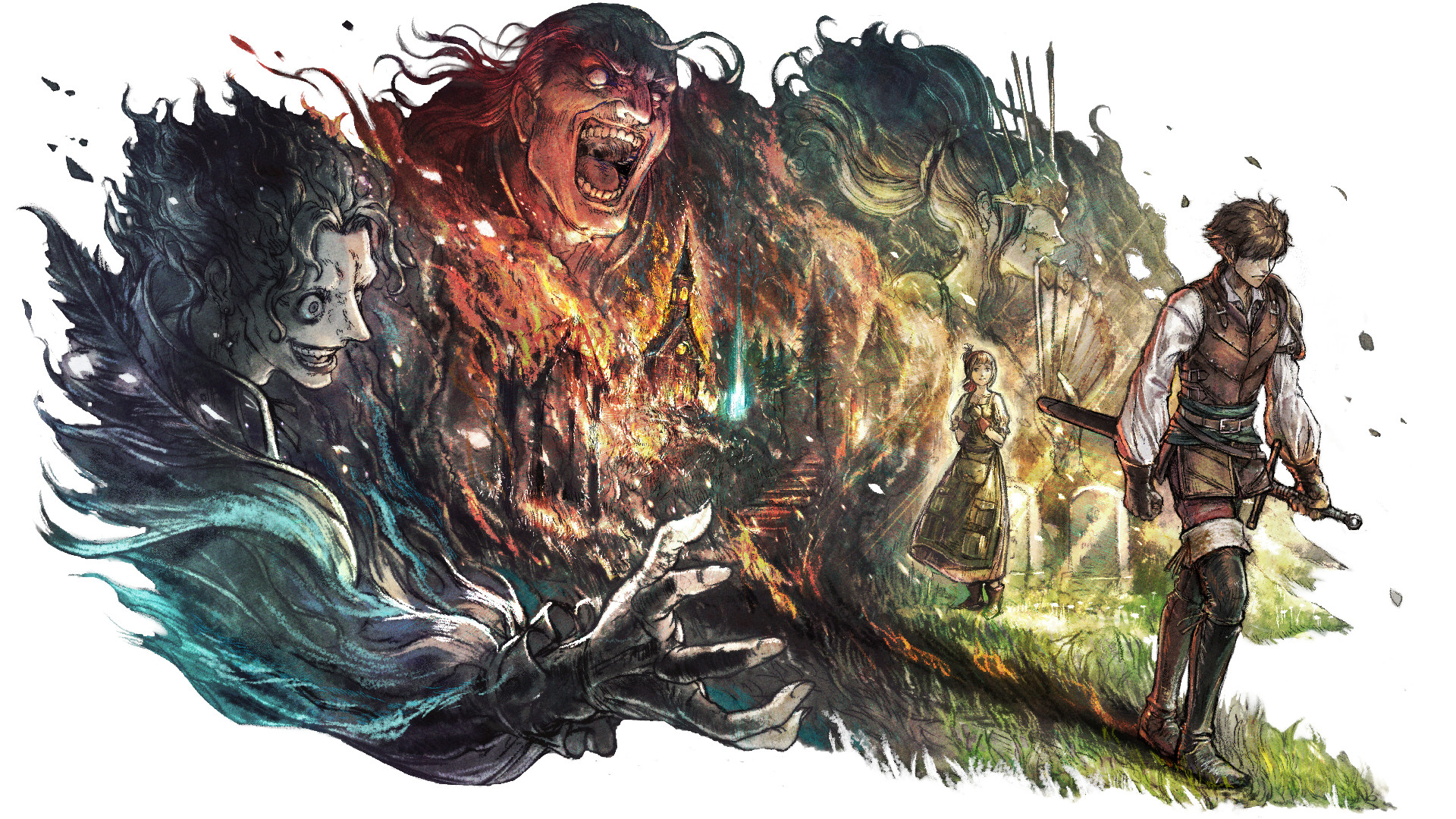50 Films That Inspired Doctor Who
Remakes in time and space
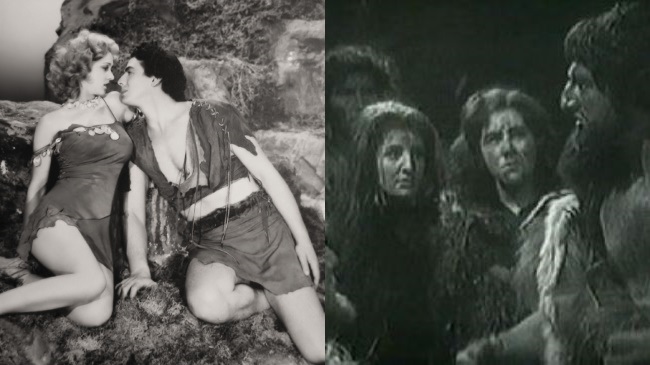
One Million B.C. (1940)
The Film: Hollywood caveman saga starring Victor Mature as the pre-historic man attempting to unite two tribes.
The Doctor Who story: Doctor Who 's remit to be educational lasted all of 25 minutes, as the TARDIS' first televised trip through time and space (in 1963's debut story An Unearthly Child ) saw the Doctor and co. captured by cavemen.
Genius Steal: The working title for the story was 100,000 B.C.
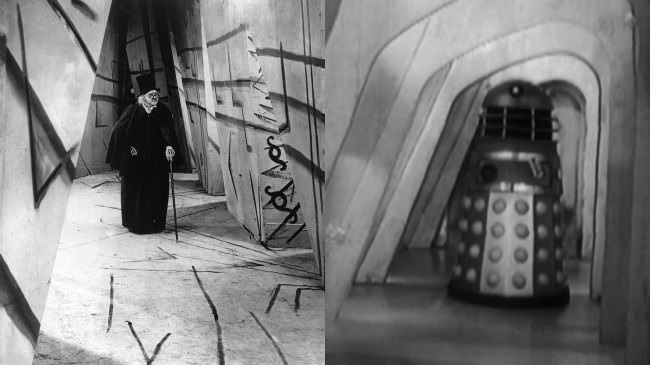
The Cabinet Of Dr Caligari (1919)
The Film: Pioneering silent horror movie notable for achieving a sense of the uncanny through stylised sets and off-kilter camera angles.
The Doctor Who story: In only his second adventure, the Doctor meets The Daleks (1963-4) after stumbling into their city on the planet of Skaro, which belies its tiny budget and cramped studio by borrowing Caligari's Expressionist aesthetic.
Genius Steal: The association with Dr Caligari doesn't end here - in 1966 adventure The Gunfighters , the Doctor uses that name as his alias.
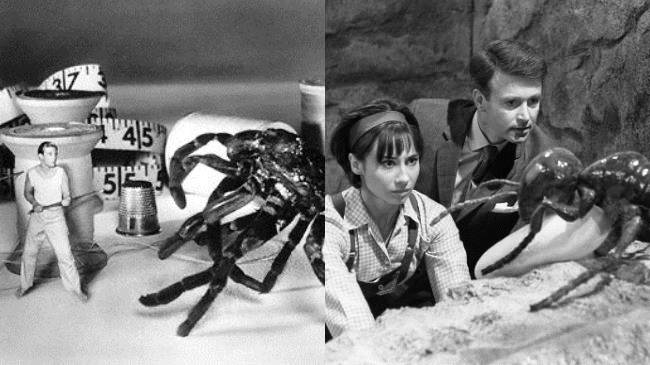
The Incredible Shrinking Man (1957)
The Film: Metaphysical sci-fi fable about the battle of everyman Scott Carey (Grant Williams) to survive life after a mysterious cloud causes him to shrink to miniscule size.
The Doctor Who story: The show's first production team tested the limits of what could achieved on a tiny (ahem) budget in Planet Of Giants (1964), as a TARDIS malfunction sees the Doctor and companions reduced in size.
Genius Steal: As in the film, the Doctor faces the most fearsome adversary of all when you're no bigger than a thimble - a cat!
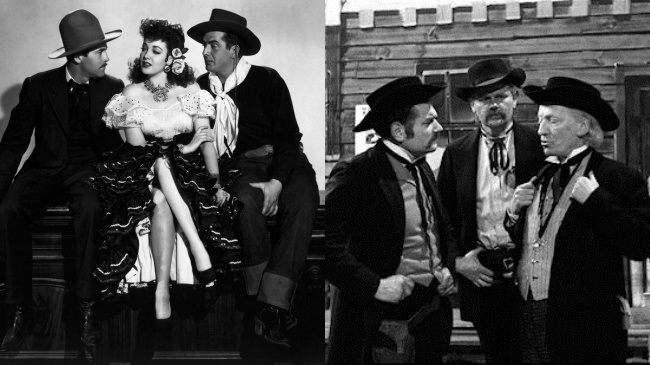
My Darling Clementine (1946)
The Film: John Ford's classic Western sees Wyatt Earp (Henry Fonda) and Doc Holliday (Victor Mature) headed for a gunfight at the O.K. Corral with the villainous Clanton family.
The Doctor Who story: The Gunfighters (1966) - one of Who 's first overt comedies - is a pastiche of Hollywood Westerns, with William Hartnell's doddering Doc caught in the crossfire after seeking dental assistance from Holliday.
Genius Steal: The action is soundtracked by a Clementine -esque song, 'The Ballad of the Last Chance Saloon'.
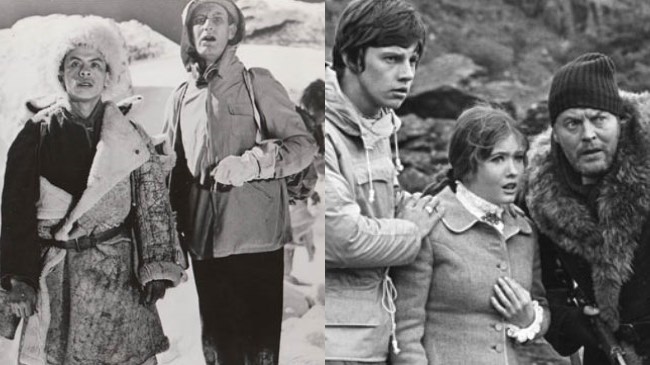
The Abominable Snowman (1957)
The Film: Adapted by British TV sci-fi legend Nigel Kneale from his BBC play, The Creature , this Hammer horror follows future big-screen Doctor, Peter Cushing, into Tibet in search of the Yeti.
The Doctor Who story: With a barely changed title, The Abominable Snowmen (1967) wears its influence proudly as the Second Doctor discovers robot Yeti in Tibet under the control of The Great Intelligence.
Genius Steal: The role of Professor Travers, hungry for the fame of being the man to discover the Yeti, is modelled on Kneale's character Dr Friend.
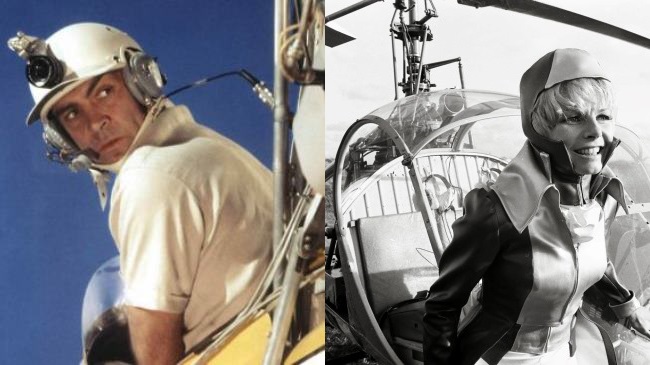
You Only Live Twice (1967)
The Film: Fifth outing for Sean Connery's James Bond, as 007 has to defeat Ernst Stavro Blofeld from his base inside a volcano.
The Doctor Who story: The Enemy Of The World (1967-8) sees the Doctor on a globe-trotting battle against the villainous Salamander (played, like the hero, by Patrick Troughton), a dictator who is ruling the world by staging natural disasters… such as volcanoes.
Genius Steal: The story begins with a fast-paced, shot-on-film action set-piece in which the Doctor is pursued by helicopter.
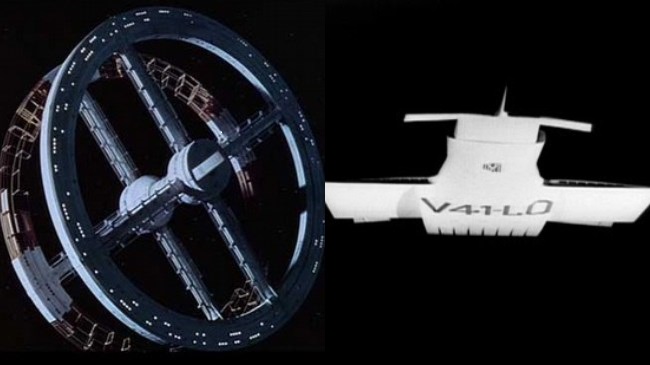
2001: A Space Odyssey (1968)
The Film: Reportedly, Stanley Kubrick called the Doctor Who production team while making his magnum opus to see how a spaceship special effect was achieved. It's fair to say he used the information wisely.
The Doctor Who story: The impact of 2001 was immediate, as The Space Pirates (1969) blew its budget on some surprisingly good model-work of spaceships. Crucially, however, the BBC forgot to add any stars in the background.
Genius Steal: Dudley Simpson's decision to soundtrack the space sequences with avant-garde female vocalising feels like a nod to Kubrick's fondness for György Ligeti.
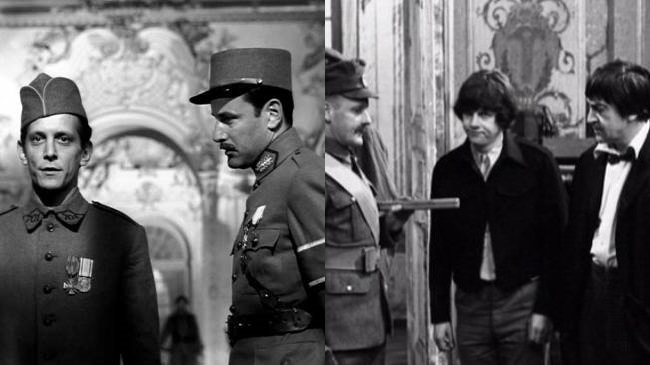
Paths Of Glory (1957)
The Film: Stanley Kubrick incurred the wrath of French authorities with his angry, uncompromising depiction of a WWI scandal in which callous generals executed three randomly chosen soldiers to cover up their own incompetence.
The Doctor Who story: The Second Doctor's swansong, The War Games (1969), begins with the Doctor, Jamie and Zoe court-martialled by the English after being found in No Man's Land and accused of being German spies.
Genius Steal: The entire first episode plays like a straight remake of Paths Of Glory , the twist being that this isn't Earth and the sadistic general is one of many aliens playing 'war games' to select Earth's finest soldiers for their own army.
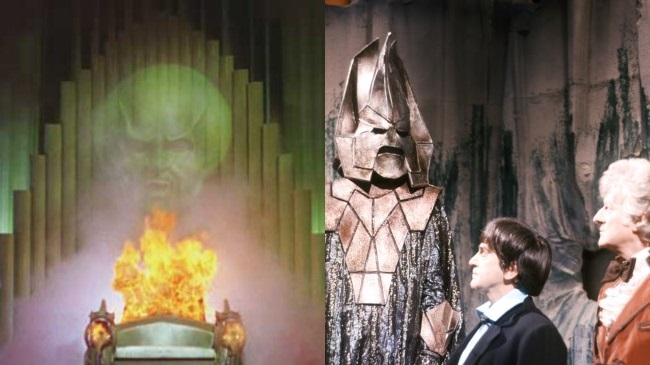
The Wizard Of Oz (1939)
The Film: "We're not in Kansas any more," as plucky young heroine Dorothy Gale is assisted by scarecrow, tin man and lion.
The Doctor Who story: The producers needed an even bigger threat than usual for 10th anniversary special The Three Doctors (1972-3), so the Doctor(s) were whisked away through a black hole by the founder of Time Lord society.
Genius Steal: Thinking laterally, isn't companion Jo Grant surrounded by Time Lord versions of Dorothy's friends? Especially after the returning 1st Doctor puts down his replacements by giving them new nicknames, specifically "a dandy and a clown."
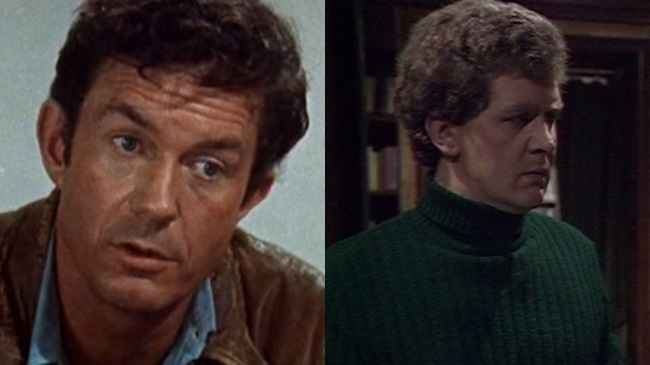
Charly (1968)
The Film: Cliff Robertson won an Oscar as the titular hero, a mentally handicapped man who is turned into a genius by a new scientific process.
The Doctor Who story: The Third Doctor's finale, Planet Of The Spiders (1974), features a mentally handicapped handyman, Tommy, whose mind expands after he comes into contact with an alien crystal.
Genius Steal: Nobody's exactly trying to hide the connection, given that John Kane, the actor playing Tommy, looks remarkably like Robertson.
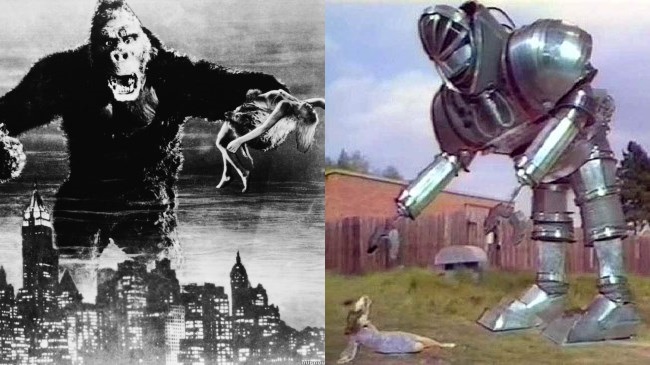
King Kong (1933)
The Film: Hollywood's greatest creature feature sees a giant ape kidnapped from Skull Island and brought to New York, where beast grabs beauty (Fay Wray) in his fatal escape attempt.
The Doctor Who story: Tom Baker's debut, Robot (1974-5), sees the 4th Doctor battle the K1 robot, which accidentally becomes a giant after absorbing the energy from a disintegrator gun.
Genius Steal: The moment the entire story is building up to, as the super-size robot grabs Sarah-Jane Smith and the BBC FX Department does its best to emulate Kong.
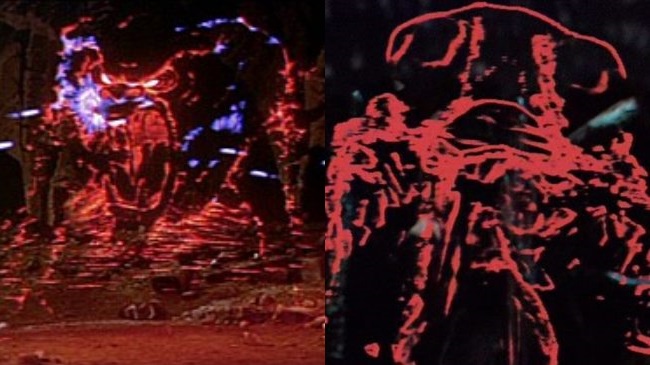
Forbidden Planet (1956)
The Film: Sci-fi retelling of Shakespeare's The Tempest , with Caliban portrayed as an invisible monster of the id unleashed on an unsuspecting space expedition.
The Doctor Who story: The Doctor's visit to the Planet Of Evil (1975) sees a marooned space crew under attack from an anti-matter monster.
Genius Steal: The device of showing the outline of the monster when shot at - not to mention the FX involved - is almost identical.
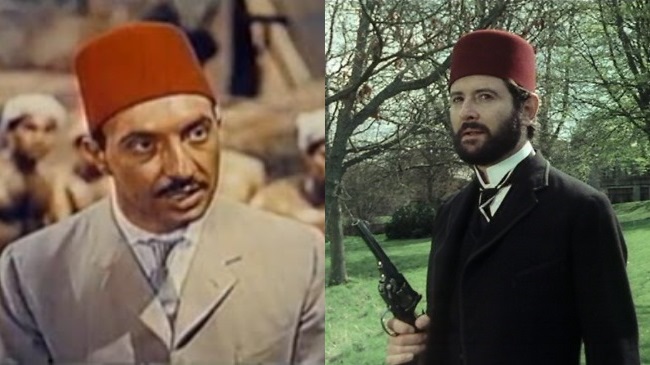
The Mummy (1959)
The Film: Hammer's take on the horror icon sees British archaeologists inadvertently bring a mummified high priest back from the dead; soon the monster is in England with a thirst for vengeance.
The Doctor Who story: In Pyramids Of Mars (1975), the mummies are robots and the master is an alien god, but otherwise the essential plot remains the same.
Genius Steal: Just as Hammer villain Kharis had a fez wearing disciple, so does the Doctor's enemy, Sutekh.
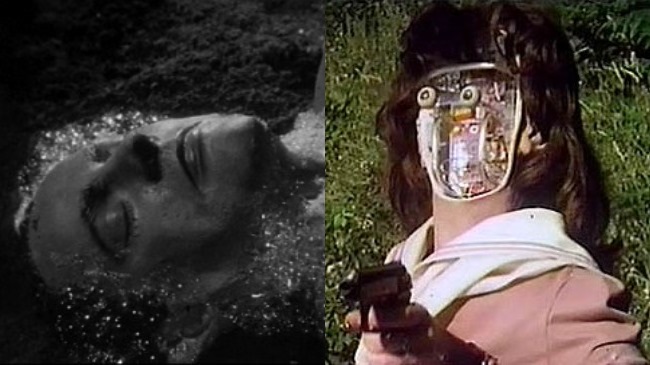
Invasion Of The Body Snatchers (1956)
The Film: Don Siegel's oft-remade sci-fi shocker proposes that, not only are aliens planning to replace humanity with conformist pod-people, but that "They're here already!!!"
The Doctor Who story: Tales of deadly Doppelgängers are common in Who , but no story wears its influence as plainly as The Android Invasion (1975), in which aliens are plotting to replace humanity with - guess what? - androids.
Genius Steal: In this case, a rare example of the show bettering its source, as - instead of discovering the truth by discovering seed pods - the Doctor realises that Sarah-Jane Smith has been replaced when he KNOCKS HER FACE OFF.
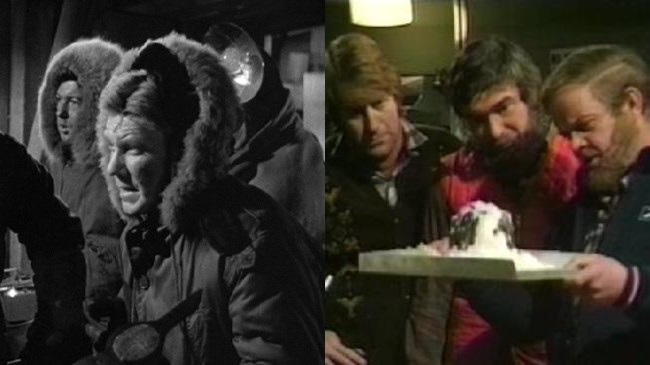
The Thing From Another World (1951)
The Film: Produced (and, many say, directed) by Howard Hawks, this tale of mankind's first contact with a killer alien makes Cold War symbolism literal by being set in Antarctica.
The Doctor Who story: In The Seeds Of Doom (1976), the Doctor investigates the discovery of seed pods buried at the South Pole, which grew into giant plant monsters called Krynoids.
Genius Steal: This is as blatant a rip-off as they come, although Who 's depiction of humans mutating into Krynoids is closer to the source novella (ironically named Who Goes There? ) and the later John Carpenter remake. Could this have influenced Carpenter?
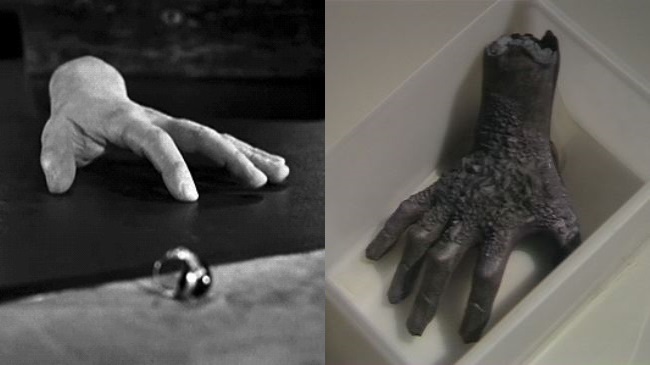
The Beast With Five Fingers (1946)
The Film: Peter Lorre is haunted by the disembodied hand of a crazed pianist in Robert Florey's memorably loopy horror movie.
The Doctor Who story: The titular The Hand Of Fear (1976) belongs to Eldrad, an alien criminal who hypnotises Sarah Jane Smith to help him create a new body.
Genius Steal: Both hands bear rings that play a crucial part in their adventures' respective stories.
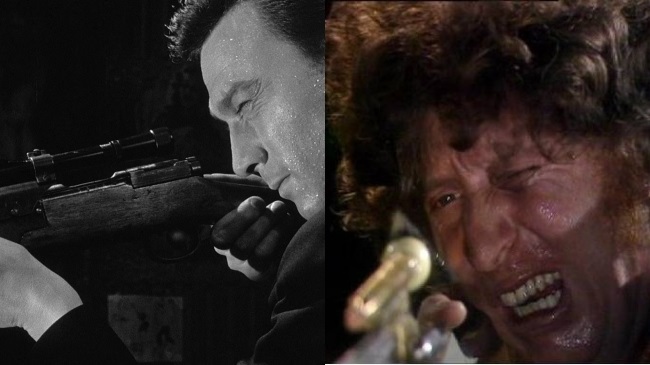
The Manchurian Candidate (1962)
The Film: Era-defining conspiracy thriller about a soldier brainwashed by Communists into becoming an assassin.
The Doctor Who story: The Doctor returns to home planet Gallifrey in The Deadly Assassin (1976), where he becomes prime suspect in the assassination of the Lord President.
Genius Steal: Writer Robert Holmes introduces a shadowy Time Lord group known as the Celestial Intervention Agency. Its acronym? The CIA.
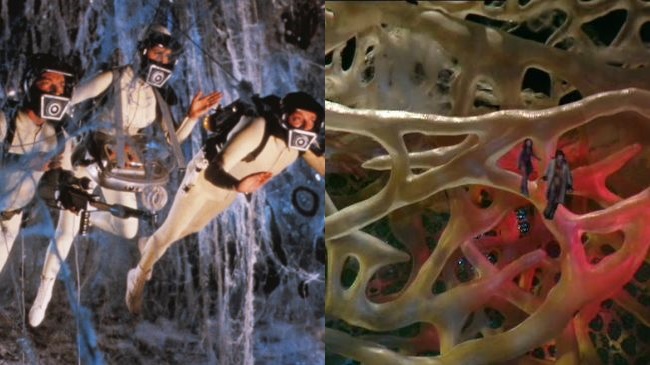
Fantastic Voyage (1966)
The Film: Raquel Welch and friends are miniaturised and injected into the body of a prominent scientist in order to save his life following an assassination attempt.
The Doctor Who story: When the Doctor is infected by an alien virus in The Invisible Enemy (1977), there's only one thing to do - inject clones of the Doctor and companion Leela into the Time Lord's own body.
Genius Steal: Whole chunks of the plot are recycled, including the use of tear ducts as a means of escape from the body.
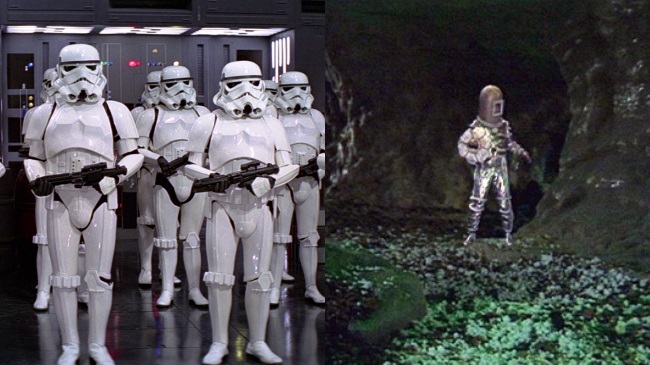
Star Wars (1977)
The Film: George Lucas' space saga changed everything, transforming Hollywood into Blockbuster H.Q. and raising the stakes for all visual sci-fi that followed in its wake. Including, of course, Doctor Who …
The Doctor Who story: 1978's Underworld , a sci-fi retelling of Jason's search for the Golden Fleece, was written before Star Wars ' UK premiere. However, producer Graham Williams saw a preview screening during pre-production and demanded that the budget be ploughed into impressive set design, given that Underworld would be the first story broadcast after Lucas' film reached British audiences.
Genius Steal: Hmmm… Spiralling inflation put paid to Williams' plans, meaning that much of the action took place in green-screen with the actors superimposed over photographs of caves. It would take a few more years for Doctor Who to get to grips with the threat posed by Star Wars .
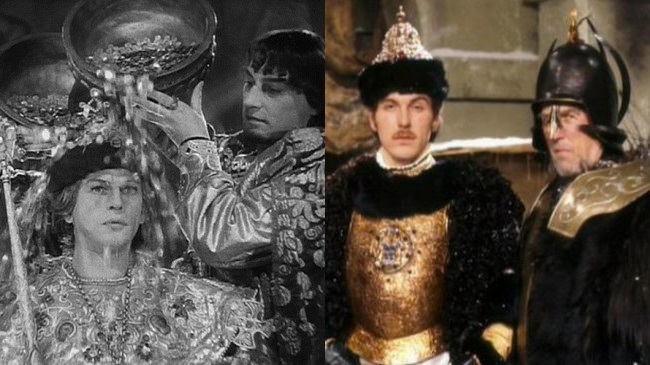
Ivan The Terrible (1944; 1958)
The Film: Sergei Eisenstein's two-part epic about the Russian tyrant was supposed to tie Ivan's 'heroic' leadership to that of Stalin, but criticism of the title character in the second part caused delays until both Eisenstein and Stalin were dead.
The Doctor Who story: The Ribos Operation (1978) saw the Doctor and new companion Romana on the hunt for the Key to Time in a wintry medieval fiefdom, battling psychotic despot the Graff Vynda-K.
Genius Steal: The BBC recycled many sets and costumes from a recently completed adaptation of Anna Karenina . Composer Dudley Simpson continued the Russian theme; his score is highly reminiscent of Sergei Prokofiev's work for Eisenstein.
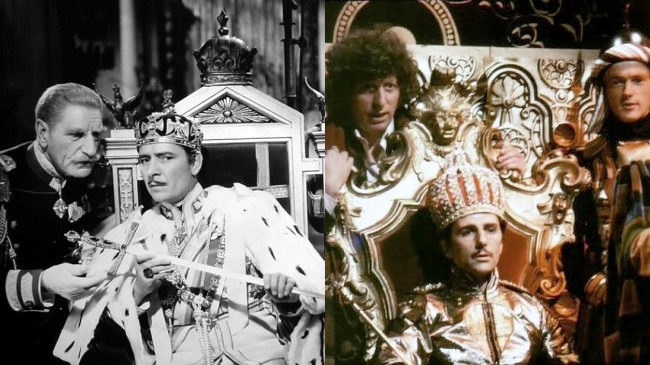
The Prisoner Of Zenda (1937)
The Film: Anthony Hope's classic novel about a traveller forced to impersonate the king of Ruritania has been filmed several times, but the 1937 version starring Ronald Colman as the Doppelganger duo buckles the most swashes.
The Doctor Who story: Give a Doctor Who writer a story involving doubles, and he'll return with a story about androids. The twist in The Androids Of Tara (1978) is that the Doctor's companion Romana is also the double of the local princess, meaning that - once their androids are made - there are FOUR lookalikes on the loose.
Genius Steal: It all ends in a duel between the Doctor and the villainous Count Grendel who - despite being thoroughly beaten - escapes with the cry, "next time, I shall not be so lenient!"
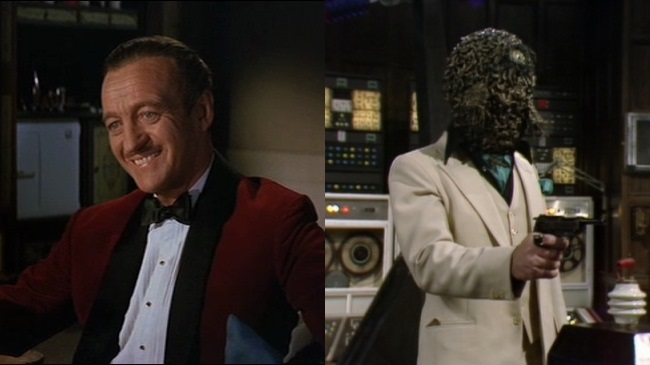
The Pink Panther (1963)
The Film: French-set caper movie in which David Niven's jewel thief attempts to steal the titular diamond… assuming Peter Sellers' inept Inspector Clouseau can't stop him first.
The Doctor Who story: Location filming in Paris and a script co-written by Douglas Adams have made City Of Death (1979) an enduring fan favourite, but it's not hard to see where its tale of the alien Scaroth's plot to steal the Mona Lisa originates.
Genius Steal: Scaroth's human wife is played by Catherine Schell, famous for playing opposite Sellers in The Return Of The Pink Panther .
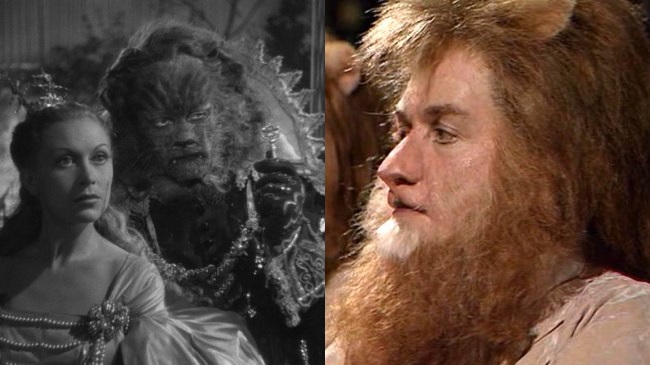
La Belle Et La Bete (1946)
The Film: Jean Cocteau's dream-like adaptation of the classic fairy tale remains the benchmark for how Beauty and The Beast should look; even Disney borrowed its aesthetic for the 'toon version.
The Doctor Who story: Weird 1981 adventure Warriors' Gate tracks the history of the alien Tharils from slavers to slaves, in a dusty castle redolent of Cocteau, while a plot device involving time-travelling mirrors borrows its imagery from the director's later film, Orphee .
Genius Steal: The leonine appearance of the Tharils is obviously modelled on Jean Marais' make-up as the Beast.
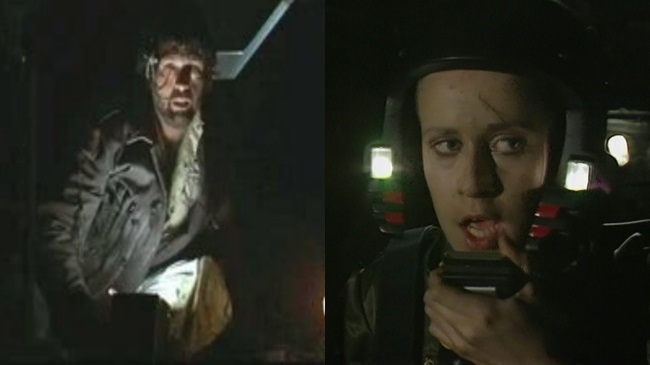
Alien (1979)
The Film: Ridley Scott's slasher-in-space provided the perfect bridge between post- Star Wars blockbuster sci-fi (high-end creature and production design) and the thematic and symbolic depth of the genre's traditions.
The Doctor Who story: Script editor Eric Saward penned Earthshock (1982) as a deliberate (if Quixotic) attempt to compete with Hollywood sci-fi. A fast-paced action adventure involving the Cybermen, it owes a huge debt to Star Wars , but the world-weary supporting characters and grim tone (including a shock death) pointed towards Alien as the bigger inspiration.
Genius Steal: The location of two soldiers is tracked as computerised dots on a monitor, until they are abruptly removed by… something.
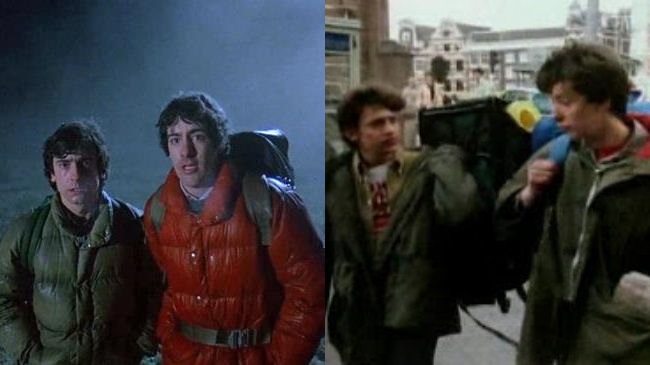
An American Werewolf In London (1981)
The Film: John Landis' horror-comedy follows two hapless Yankee backpackers on an ill-advised holiday that sees one transformed into a werewolf and the other confined to an undead limbo.
The Doctor Who story: What's the connection between a crisis on the Doctor's home planet of Gallifrey and an abandoned crypt in Amsterdam? Two British backpackers are about to find out in Arc Of Infinity (1983).
Genius Steal: The opening scenes promise a proper homage, until the Brits stumble upon the beast in the crypt - the not-very-impressive bird-like monster, Ergon.
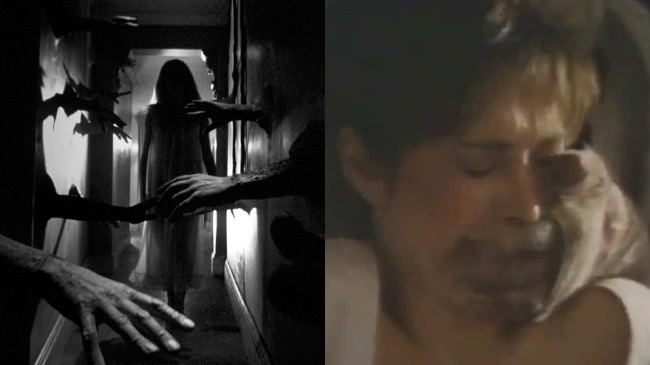
Repulsion (1965)
The Film: Roman Polanski arrived in Swinging Sixties London, only to bring Eastern European dread in a psychological horror movie about Catherine Deneuve undergoing a mental breakdown while confined to her Kensington apartment.
The Doctor Who story: Doctor Who has rarely been as bleak as in Terminus (1983), the cheery tale of a space station used to house victims of a leprosy-like disease and guarded by melancholy slaves.
Genius Steal: It's a passing reference, but scenes of companions Tegan and Turlough stuck in a ventilation shaft, being grabbed through the walls by the hands of the infected, are lifted directly from Polanski. You can see why the story ended up so dark if that's what the production team had been watching.
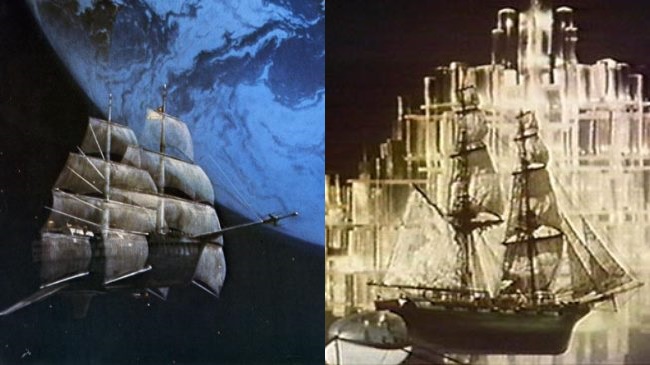
Message From Space (1978)
The Film: Long before his cult hit Battle Royale , prolific Japanese director Kinji Fukasaku made this post- Star Wars space adventure in which the characters cross the cosmos in intergalactic sailing ships.
The Doctor Who story: In Enlightenment (1983), the Doctor lands aboard what he assumes is an Edwardian boat… until he discovers it is one of many ships being raced across the solar system by the amoral Eternals.
Genius Steal: While the Japanese film uses the retro-look as a purely aesthetic choice, the Eternals have stolen their crews from various points of Earth history, meaning a greater variety of ships.
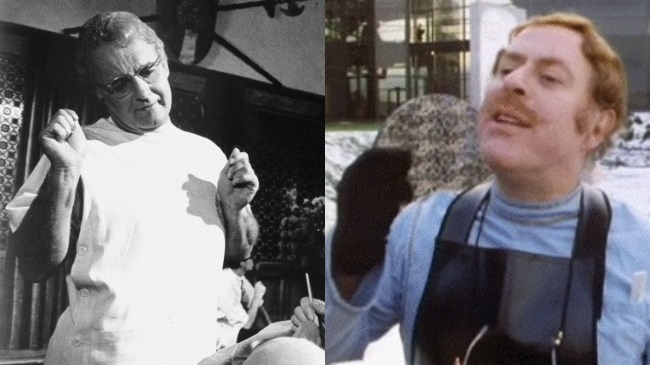
The Loved One (1965)
The Film: Tony Richardson's adaptation of Evelyn Waugh's novel about the Californian funeral business.
The Doctor Who story: In Revelation Of The Daleks (1985), Davros lures the Doctor to cryogenic facility Tranquil Repose, where it soon transpires that the nearly-dead elite are being turned into Daleks.
Genius Steal: The twisted relationship between chief embalmer Jobel and his assistant Tasambeker is lifted directly from Waugh characters Mr Joyboy (Rod Steiger) and Aimée Thanatogenos (Anjanette Comer).
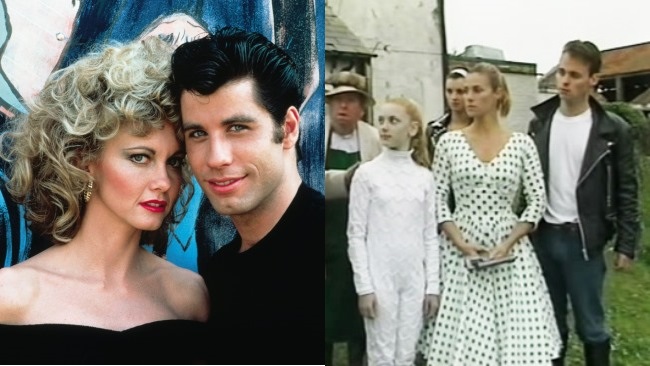
Grease (1978)
The Film: John Travolta and Olivia Newton-John pile on the 1950s cool in a rock 'n' roll musical with plenty of wella wellas and a lot of huh!
The Doctor Who story: The 7th Doctor's holiday goes awry when an alien princess is pursued to a 1950s holiday camp in Delta And The Bannermen (1987).
Genius Steal: Alien Delta takes off for space with Welsh greaser Billy, a la Danny and Sandy in their flying Greased Lightning.
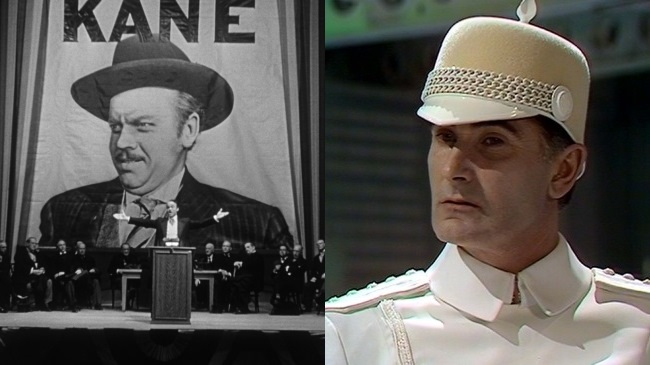
Citizen Kane (1941)
The Film: Orson Welles' debut, regularly christened the greatest film ever, has inspired countless writers and directors, so it was only a matter of time before Doctor Who got around to it.
The Doctor Who story: Writer Ian Briggs had obviously been paying attention in his film studies class, because his 1987 story Dragonfire is full of allusions to classic movies and film theorists - a spaceship called Nosferatu, an Aliens-esque 'bug hunt' to kill a monster, and characters named after famous critics Bazin and Kracauer. And the villain's name? Kane, of course.
Genius Steal: Kane, like his namesake, is forever haunted by his lost youth… although in his case it takes the form of wanting revenge on a planet that is long since dead and, unlike Kane, his face melts off.
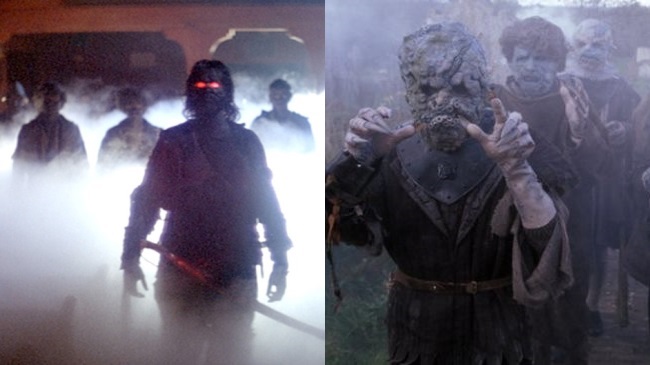
The Fog (1980)
The Film: John Carpenter's chiller about a coastal community under siege from the ghosts of the shipwrecked sailors the town's forebears left to die.
The Doctor Who story: The Doctor's battle against The Curse Of Fenric (1989) sees Yorkshire village Maiden's Point besieged by vampire-like Haemovores, whose arrival from the sea comes with a tell-tale fog.
Genius Steal: An urn containing the imprisoned spirit of Fenric is buried in the wall under the church, much like the gold stolen by the townsfolk in Carpenter's film.
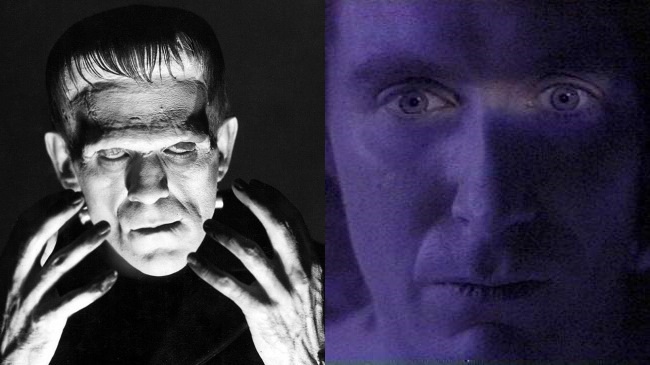
Frankenstein (1931)
The Film: The definitive screen version of Mary Shelley's tale of scientific horror, with Boris Karloff as the misunderstood monster created by a mad scientist.
The Doctor Who story: While most fans point to 1975-6 adventure The Brain Of Morbius , in which a rogue Time Lord gets a new body from stitched-together alien bits, spare a thought for the pilot-of-the-reboot-that-never-was in 1996, when American producers used the imagery of the James Whale film to explain why Sylvester McCoy had regenerated into Paul McGann.
Genius Steal: A morgue attendant is literally watching the film while the Doctor regenerates. There's nothing quite like subtlety, is there?
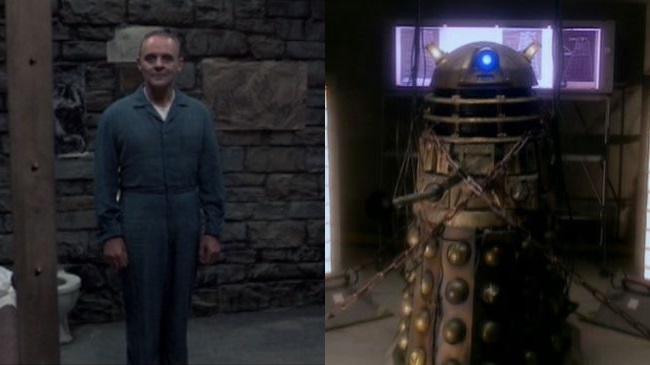
The Silence Of The Lambs (1991)
The Film: Thomas Harris' serial killer thriller was turned into an Oscar-winning hit starring Anthony Hopkins as imprisoned cannibal Hannibal Lecter.
The Doctor Who story: A devious, intelligent prisoner trapped in the basement? Why, that has to be the titular monster in Dalek (2005).
Genius Steal: The Dalek toys with the kindness of a naïve young woman unused to dealing with such opponents - with Rose taking the place of Clarice Starling.
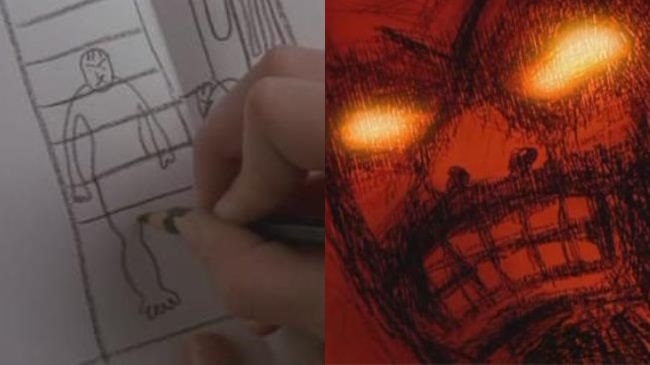
Paperhouse (1988)
The Film: Bernard Rose's underrated horror-fantasy revolves around 11-year-old Anna, whose drawings come to life.
The Doctor Who story: 10th Doctor story Fear Her (2006) follows much the same premise, except that events are being caused by the Isolus, a lost and lonely alien who befriends young girl Chloe.
Genius Steal: As in Paperhouse , the girl is threatened by a malevolent picture of her father that she drew.
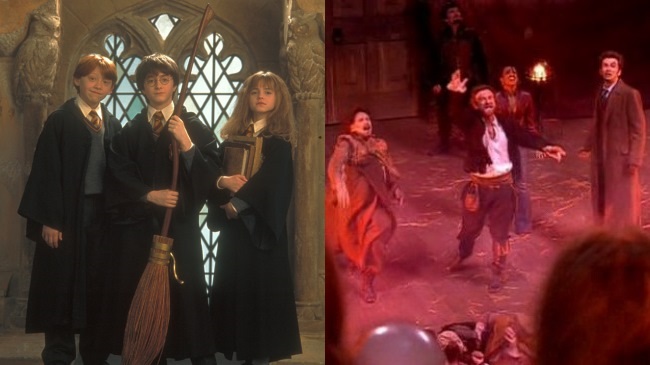
Harry Potter And The Philosopher's Stone (2001)
The Film: Oh, just some story about a kid who finds out he's a wizard.
The Doctor Who story: Surprisingly, 2007's The Shakespeare Code has less to do with obvious influences Shakespeare In Love and The Da Vinci Code than J.K. Rowling's fantasy franchise, as 'magic' is revealed to be a type of science based on words.
Genius Steal: Martha manages to prevent the Carrionites from taking over the Earth by the well-judged use of a Hogwarts spell - "Expelliarmus!"
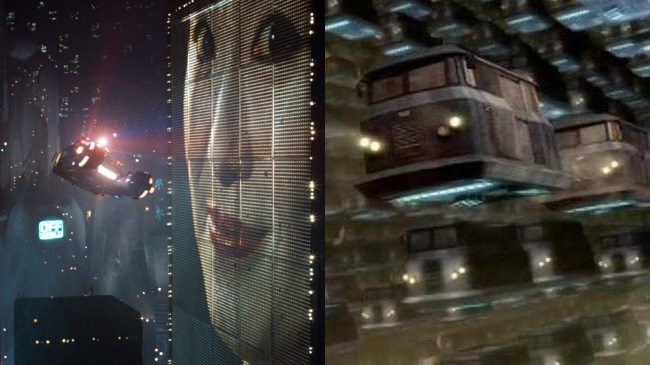
Blade Runner (1982)
The Film: The thematic and emotional depth of Ridley Scott's sci-fi thriller took a while to catch on, but its design influence was immediate, as everybody emulated its noirish landscapes of flying cars and acid rain.
The Doctor Who story: Classic Doctor Who didn't have the budget to 'do' Blade Runner . Neither does the contemporary version, to be honest, but Gridlock (2007) took a decent stab with its depiction of a society stuck in their flying cars.
Genius Steal: Inevitably, it's raining.
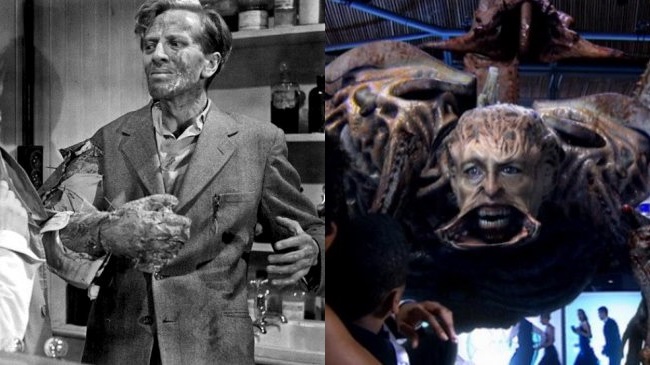
The Quatermass Xperiment (1955)
The Film: British sci-fi shocker (based on the influential BBC TV series) about an astronaut who mutates into an alien creature after a fateful expedition into space.
The Doctor Who story: The Quatermass franchise has been pilfered by Doctor Who for decades, most recently in 2007's The Lazarus Experiment , in which Mark Gatiss plays a scientist whose experiments cause him to mutate into a monster.
Genius Steal: The ending in a London church is a deliberate homage to Quatermass , not least because Gatiss and 10th Doctor David Tennant had recently starred in a new TV version of the original story.
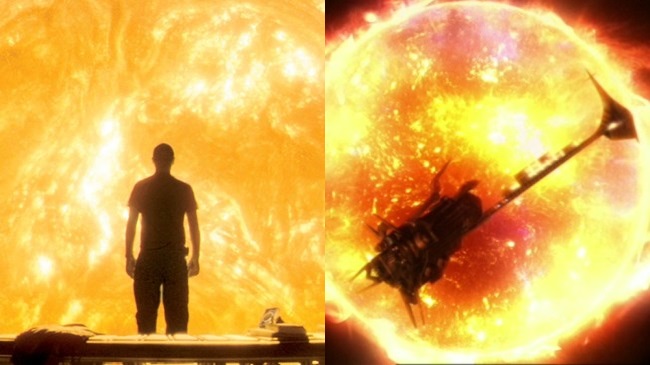
Sunshine (2007)
The Film: Danny Boyle's sci-fi thriller charts the journey of the Icarus II as it attempts to kick-start the sun in order to save the Earth.
The Doctor Who story: Broadcast only a month after Sunshine 's release, 42 (2007) offers an uncannily similar story in which the Doctor and Martha are trapped on a spaceship that cannot escape the orbit of a sun.
Genius Steal: Theft, or coincidence? While Sunshine was in the can before 42 was made, there's no evidence of plagiarism, just a case of two great directors (Boyle and Who veteran Graeme Harper) thinking alike in their use of imagery.
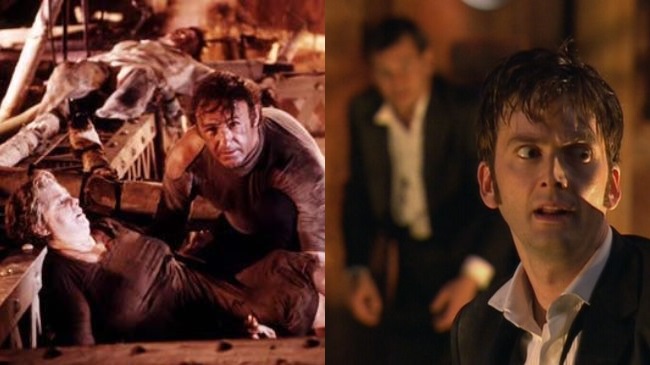
The Poseidon Adventure (1972)
The Film: The definitive disaster movie sees the S.S. Poseidon turned upside-down during a storm. Can fierce preacher Gene Hackman lead the survivors to safety?
The Doctor Who story: The 2007 Christmas special, Voyage Of The Damned , wears the influence of Poseidon on its sleeve as the Doctor - with a little help from Kylie Minogue - battles to stop a sabotaged space-liner from crashing into the Earth.
Genius Steal: Tragic passenger Foon is so clearly modelled on Shelley Winters' character Belle Rosen in look and plot development that it's a wonder nobody sued.
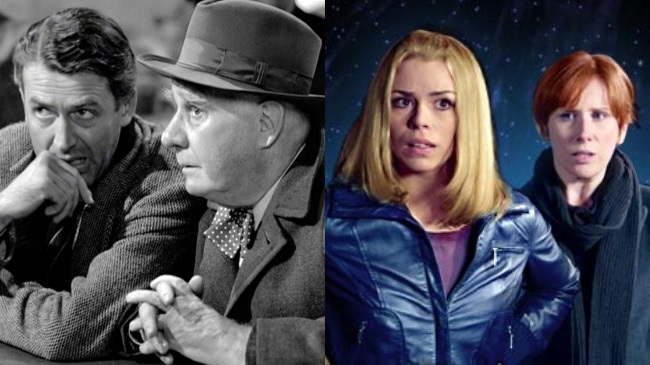
It's A Wonderful Life (1946)
The Film: What would have happened had Jimmy Stewart's everyman hero George Bailey never existed? Frank Capra's classic drama shows us the terrible impact on friends and family.
The Doctor Who story: What would happen if the Doctor died? Russell T. Davies' Doctor-lite episode Turn Left (2008) rewrites the series from the viewpoint of companion Donna Noble, as Britain goes to hell without the Time Lord's help.
Genius Steal: Billie Piper's Rose Tyler makes her much-anticipated return from a parallel universe to help Donna. This is as close as Who gets to an angel popping down from heaven.
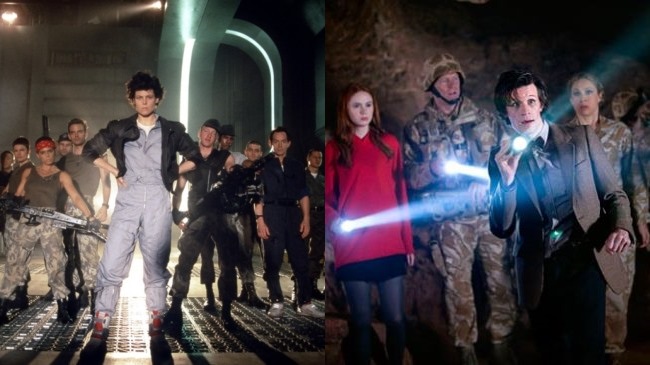
Aliens (1986)
The Film: For the sequel to Alien , James Cameron ramped up the threat by pitching a group of space marines against hundreds of xenomorphs.
The Doctor Who story: Steven Moffat has admitted that 2010's The Time Of Angels - the sequel to his classic Blink (2007) - was a conscious attempt to 'do an Aliens ' by switching genres from horror to action.
Genius Steal: The Doctor is assisted by a group of soldiers, although in a typically Who -esque twist, they are actually militarised priests.
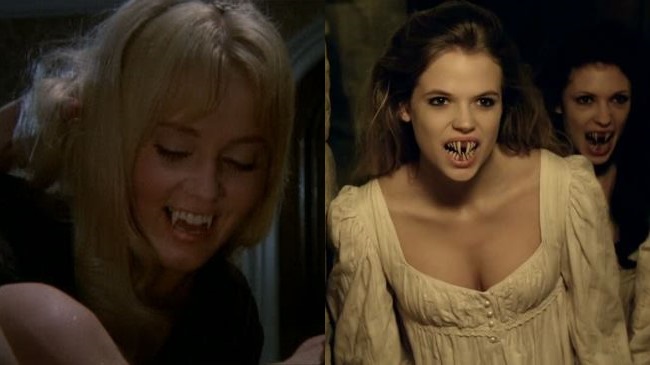
Lust For A Vampire (1971)
The Film: The quintessential late-period Hammer vampire film, in that it adds censor-baiting lesbianism and nudity into the traditional gore.
The Doctor Who story: Doctor Who has never been shy about stealing from Hammer horror and, indeed, 1980's State Of Decay was steeped in the studio's imagery. But modern Who went raunchy in its model for Vampires In Venice (2010) which, given they could have opted to pastiche Twilight , has to be a good thing.
Genius Steal: For no good reason beyond providing an excuse for attractive young vampires, the villainous Rosanna Calvierri runs a school for girls.
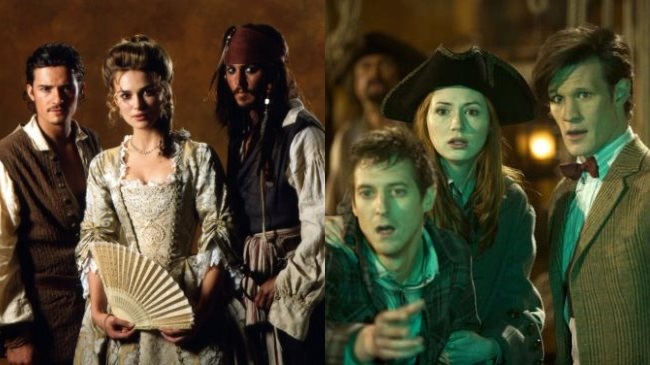
Pirates Of The Caribbean: The Curse Of The Black Pearl (2003)
The Film: Destroying Hollywood orthodoxy that pirate movies were doomed to flop, Jerry Bruckheimer cannily took a Disney theme park ride, merged traditional action with elements of fantasy, and added a career-best Johnny Depp on top.
The Doctor Who story: Doctor Who first told a pirate adventure in 1966 story The Smugglers , but 2011's The Curse Of The Black Spot is palpably influenced by the Caribbean films as the Doctor ponders, "Yo ho ho! Or does nobody actually say that?"
Genius Steal: Never mind the title, just listen to Murray Gold's score.
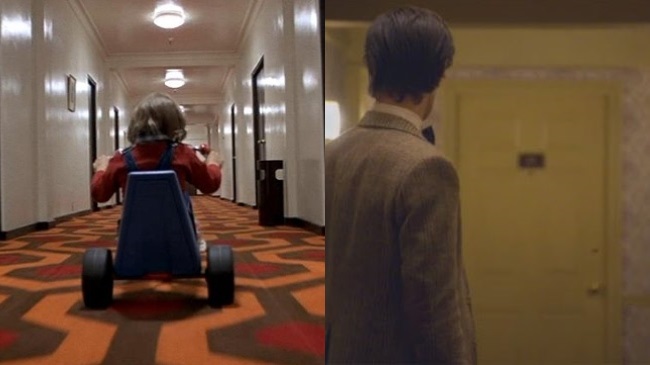
The Shining (1980)
The Film: Stanley Kubrick's atmospheric adaptation of the Stephen King horror novel deposits a crazed Jack Nicholson and family into a haunted hotel. Beware Room 237.
The Doctor Who story: 2011 adventure The God Complex traps the 11th Doctor, Amy and Rory in a mysterious hotel where each room contains a "guest's" greatest fear.
Genius Steal: Check out the décor - those carpet patterns are an obvious shout-out to Kubrick.
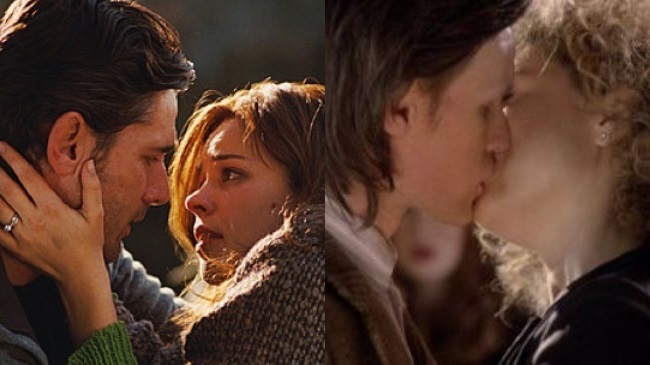
The Time Traveller's Wife (2009)
The Film: Eric Bana and Rachel McAdams star in the adaptation of Audrey Niffenegger's best-seller about a timey-wimey relationship troubled by Bana's habit of perpetually popping forwards and backwards along his timeline.
The Doctor Who story: Steven Moffat first pilfered Niffenegger's ideas in 2006's The Girl In The Fireplace but when he became Who showrunner he milked the idea for all of its worth with the character of River Song, the mysterious archaeologist/outlaw who keeps meeting the Doctor in the wrong chronological order.
Genius Steal: The marriage of the Doctor and River in The Wedding Of River Song (2011), which makes explicit the connection to anybody who hadn't already figured out Moffat's inspiration.
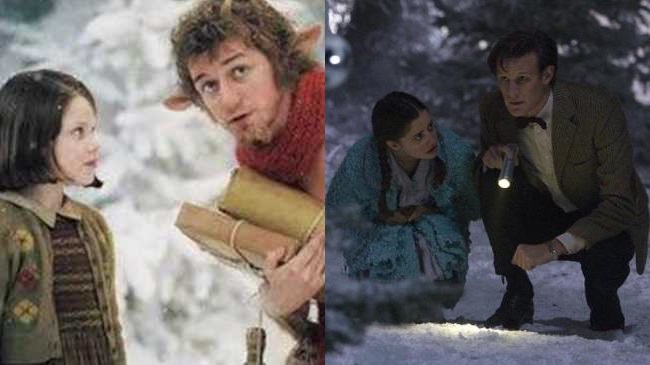
The Chronicles Of Narnia: The Lion, The Witch And The Wardrobe (2005)
The Film: Andrew Adamson's blockbuster retelling of C.S. Lewis' fantasy classic about a magical kingdom accessed via an everyday object.
The Doctor Who story: Let's be honest - all of Doctor Who has been influenced by Lewis, given that the wardrobe is essentially "bigger on the inside." But it took until the 2011 Christmas special to acknowledge the debt in the revealingly titled The Doctor, The Widow And The Wardrobe .
Genius Steal: The country house during wartime, the portal to a wintry forest, the lamppost. As Who writer Ben Aaronovitch once said, "talent borrows, genius steals, and Doctor Who authors get it wholesale off the back of a lorry."
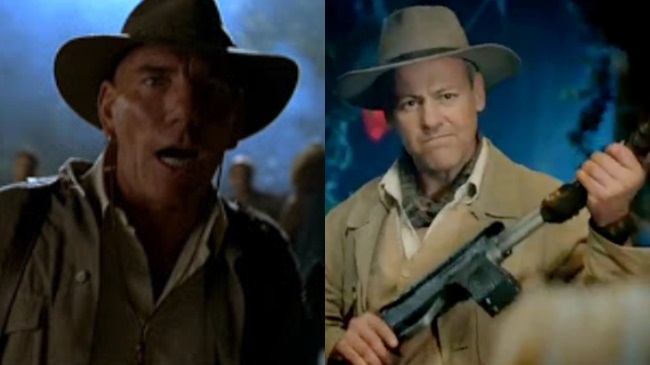
Jurassic Park (1993)
The Film: Steven Spielberg's groundbreaking blockbuster changed the face of movie FX by seamlessly mixing CGI and animatronics, to convince audiences that dinosaurs might still be roaming free.
The Doctor Who story: Nearly twenty years before Jurassic Park , Doctor Who somewhat ambitiously made Invasion Of The Dinosaurs (1974), using unconvincing models that said "Roar!" Nearly twenty years after Jurassic Park , British TV could afford decent enough special effects to put Dinosaurs On A Spaceship (2012).
Genius Steal: One of the characters is a big-game hunter who treats dinosaurs like any other kill - just like Pete Postlethwaite's character in Spielberg's 1997 sequel The Lost World .
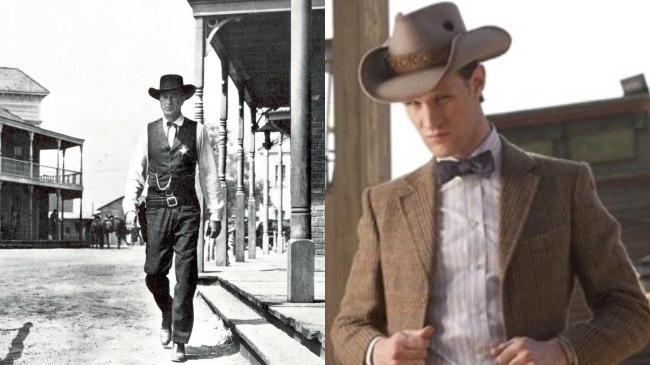
High Noon (1952)
The Film: Classic Oscar-winning Western in which sheriff Gary Cooper has until the title to raise a posse to help protect himself against a vengeful criminal… except nobody will help him.
The Doctor Who story: A cyborg gunslinger visits A Town Called Mercy (2012) and gives the population an ultimatum to turn over Kahler-Jex, the alien doctor who experimented on him. The deadline? Noon.
Genius Steal: A deliberate reversal of expectation, as the Doctor persuades the townsfolk to help Kahler-Jex.
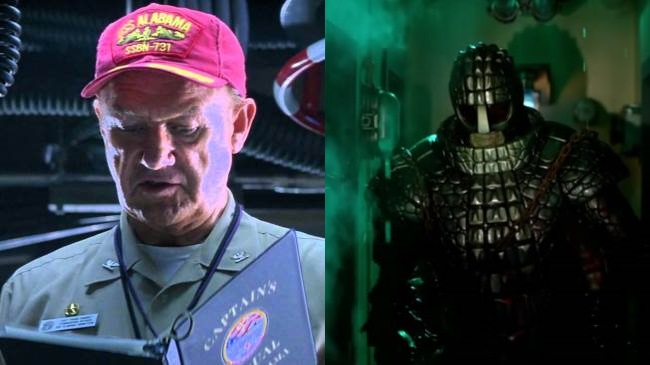
Crimson Tide (1995)
The Film: Tony Scott's submarine thriller swaps the director's customary action for claustrophobic character drama as Gene Hackman and Denzel Washington tussle over whether to follow an order to launch a nuclear missile strike.
The Doctor Who story: When the Doctor is trapped aboard a Soviet sub in Cold War (2013), he finds himself in Washington's shoes - except that, instead of Hackman, the warmonger is a vengeful Ice Warrior.
Genius Steal: The pun in the title that links a classic Who monster to the story's underwater genre.
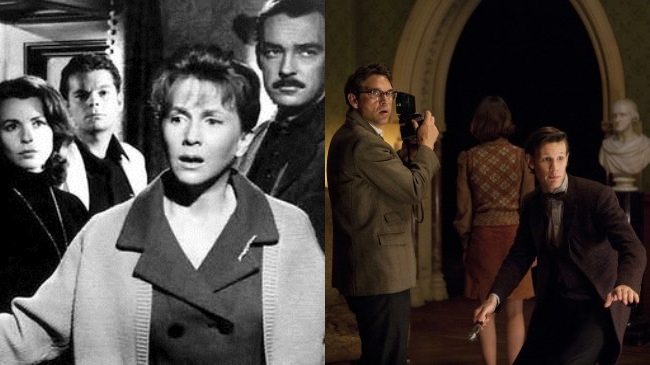
The Haunting (1963)
The Film: Ignore the terrible Jan De Bont remake. If you want to be scared, there's none scarier than Robert Wise's old-school chiller about paranormal investigators at a haunted house.
The Doctor Who story: Hide (2013) follows the 11th Doctor and Clara into Caliburn House, where a scientist is harnessing his assistant's psychic abilities to collect evidence of a ghost - except that, this being Doctor Who , the 'ghost' is a trapped time traveller.
Genius Steal: The Doctor discovers a "cold spot" in the house - just as the investigators at Hill House did.
